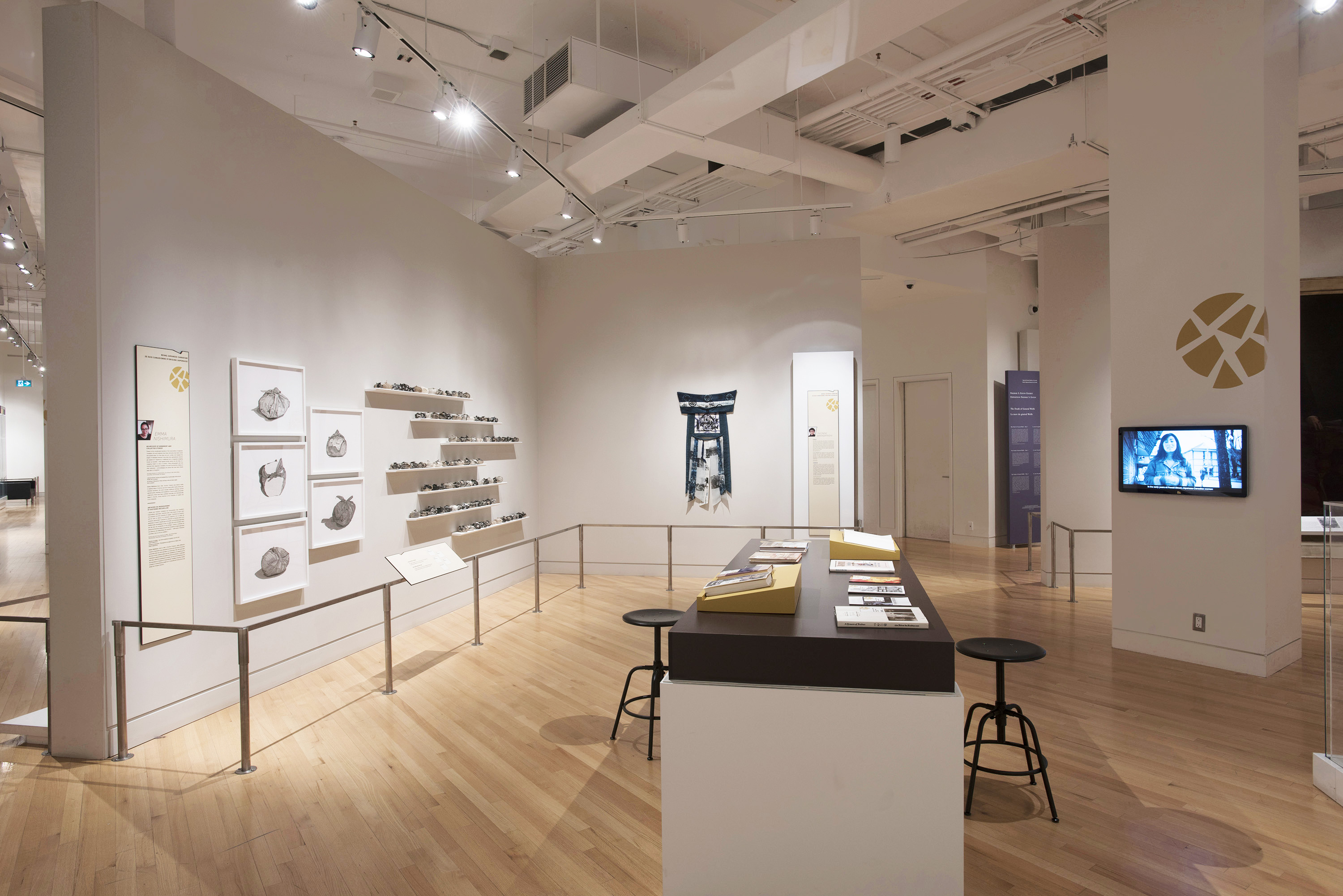Shows
Being Japanese Canadian: Reflections on a Broken World



“Canada's heritage is one of diverse cultures,” begins the description for the Sigmund Samuel Gallery of Canada at the Royal Ontario Museum (ROM) in Toronto. Yet the space’s 560 permanent holdings feature primarily cultural symbols “from the early years of European settlement to the present day, with emphasis on the early French and British cultural legacy,” presenting a narrow, Euro-centric notion of Canadianness, despite recent additions by black and Indigenous artists.

Seemingly as an attempt to embed Japanese Canadianness into the grand national
identity, “Being Japanese Canadian: Reflections on a Broken World” was situated within the Gallery of Canada and featured eight Japanese Canadian artists whose works, from multigenerational angles, speak to the personal and collective struggles that were shaped by an era of removal, displacement and incarceration. Additionally, through a variety of publications on Japanese Canadian narratives—such as popular writings, scholarly texts and novels presented at a reading station set up in the middle of the gallery and online—ROM curators, in collaboration with Japanese Canadian Cultural Center curator Bryce Kanbara and arts educator Katherine Yamashita, acknowledged the Canadian government’s unfair treatment of Japanese Canadians through internment and widespread, government-backed anti-Japanese sentiment during the Pacific War. Also shown were archival photographs and texts about the Redress Movement in Canada, where the National Association of Japanese Canadians (NAJC) demanded and won restitution of civil rights, a public apology and financial compensation for their hardships.
The embodiment of the physical internment sites, acting as memorials to record and materialize the hardships and dislocations, was palpable in several artists’ works. For instance, Toronto-based Emma Nishimura’s etching map series “Constructed Narratives” (2013–18) recreated 1940s-era internment and road camps through texts and drawings. It was also hard to look past the emotional vulnerability of the mixed-media installation Ghostown (2013) by Calgary-based Steven Nunoda. Nunoda’s compositions of handmade tar paper house models, an embodiment of the shacks built by internees, emblematizes the relocation and imprisonment of 22,000 Canadians of Japanese descent. Inspired by a conversation, an accompanying sculpture also by Nunoda, Ladder to the Moon (2013)—literally a moon created by a projection and connected to a black wooden ladder—created an uncanny yet affecting dialogue with the house models with the help of the gallery lighting.

Several of the artists chose to respond to past traumas by inheriting and preserving personal family stories. The acrylic-on-canvas Reiko, Alberta 1945 (2009), by Lillian Michiko Blakey, depicts a girl looking through two strips of barbed wire, with a subtle smile on her face that can also be read as a look of desperation. The work is one in a series that the artist had resolved to create after hearing about the 2,700 Japanese Canadians in the Pacific Coast —Blakey’s mother and family among them—who were forced to relocate to Alberta in order to labor in sugar beet fields, in 1942. Marjene Matsunaga Turnbull’s Continuum: A Japanese-Canadian Cake History (1992) consists of a clay sculpture of a layered cake and a stack of ordered, lined note cards denoting what a certain memory or family history of hers each layer of the cake represents. Incorporating physical imagery of symbols that speak to different eras—such as the kokeshi doll, a child’s toy, representing the future—the work is a visual metaphor for critical historical moments and sensibilities of Japanese Canadians.
Although a well-meaning gesture on the curators’ part, the incorporation of these works into the permanent collection seemed more interventional than natural, creating a guest-host type relationship with works that have been long housed in the gallery. As “Being Japanese Canadian” was initiated in the context of the 30th anniversary of the 1988 Redress Agreement between the NAJC and the Canadian government, one wonders when, where and how often these works be displayed after this exhibition ends. Will they return to the vault and remain there until the next occasion of guilt and awakening? On a broader level, how can we sharpen our understanding of and truly celebrate the multiplicity and complexity of Canadianness? The country’s acknowledgment of its long history of anti-Asian racism should not stop here.
“Being Japanese Canadian: Reflections on a Broken World” is on view at the Sigmund Samuel Gallery of Canada, Royal Ontario Museum, until August 5, 2019.
To read more of ArtAsiaPacific’s articles, visit our Digital Library.









